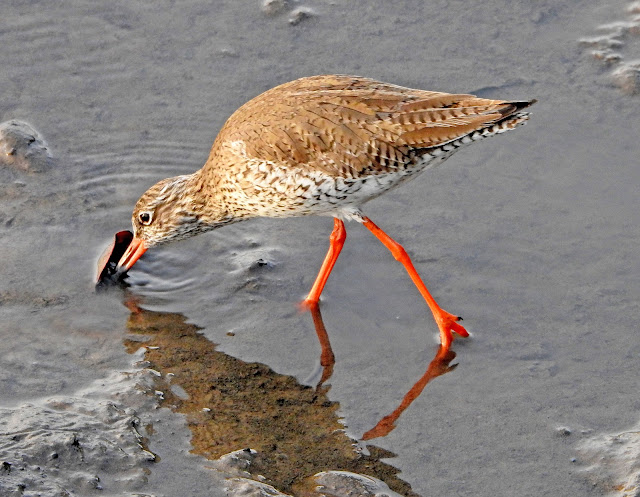The Common Redshank, Tringa totanus, is a Eurasian wader belonging to the large family Scolopacidae. Exhibiting a striking change in plumage, they don a marbled brown color during the breeding season, which transitions to a plainer greyish-brown above and whitish below in the winter. Their legs are a vibrant red, complemented by a black-tipped red bill. In flight, they reveal a distinctive white pattern up the back and on the wings.
To identify the Common Redshank, look for the red legs and the black-tipped red bill, which are characteristic of the species. The white trailing edge on the wings is also a key feature, particularly visible during flight. In breeding plumage, they exhibit a marbled brown coloration, while in winter, they adopt a less patterned greyish-brown and whitish color scheme.
Redshanks are versatile in their choice of wetland habitats, ranging from damp meadows to saltmarshes. They are often found in high densities within these environments.
This species is a widespread breeder across temperate Eurasia and migrates to winter on coasts around the Mediterranean, the Atlantic coast of Europe, and in South Asia. They are occasionally recorded as vagrants in areas such as Micronesia.
The Common Redshank is known for its wariness and its loud, piping call, which can serve as an alarm to other creatures in the vicinity.
Redshanks are not particular about their nesting sites, as long as the location is a wetland. They can nest at high densities and lay clutches of 3–5 eggs.
Their diet consists primarily of small invertebrates, which they forage for in their wetland habitats.
The IUCN considers the Common Redshank to be of Least Concern, indicating a stable population. However, it is listed as Vulnerable in Europe. The species is also protected under the Agreement on the Conservation of African-Eurasian Migratory Waterbirds (AEWA).
The Spotted Redshank, T. erythropus, is similar but can be distinguished by its longer bill and legs. In breeding plumage, it is almost entirely black, and in winter, it is very pale, contrasting with the Common Redshank's seasonal coloration.
The Common Redshank's call is a distinctive, loud "teu-teu-teu," often heard as they take to the air in alarm or while in flight.



































